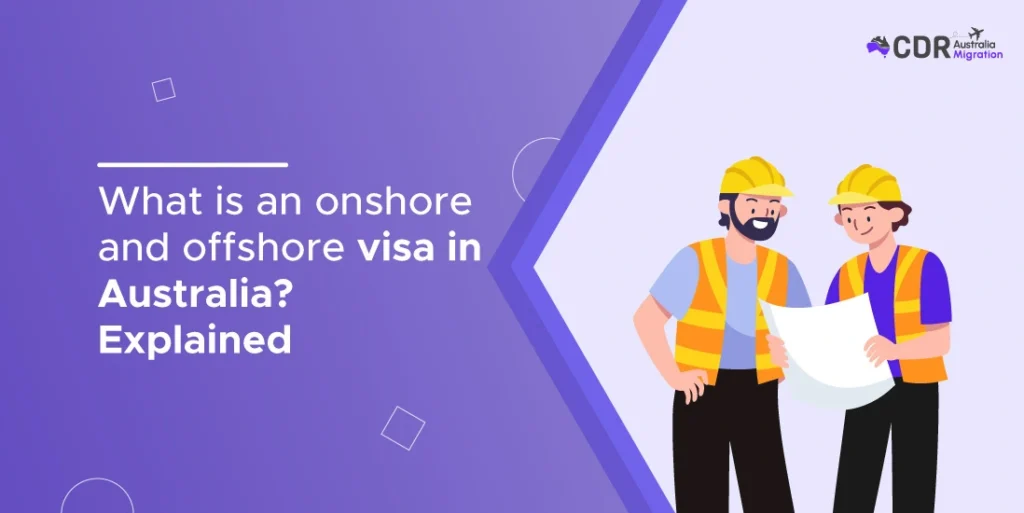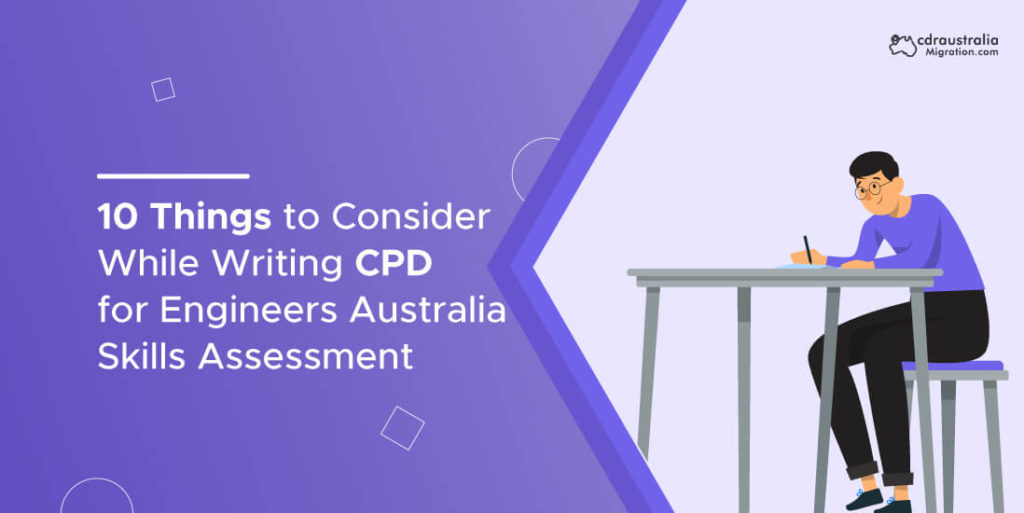Australia is one of the most sought-after destinations for skilled workers, students, tourists, and migrants. If you’re considering making Australia your temporary or permanent home, understanding the visa application process is key. In 2024, there are two main pathways to obtain a visa: onshore and offshore visas. Each of these visa options has its specific processes, requirements, and benefits. This comprehensive guide will break down the differences between onshore and offshore visas in Australia, along with eligibility criteria, application processes, challenges, and important policy updates for 2024.
🔑 Key Highlights
- Onshore visas are applied for within Australia, while offshore visas are submitted from outside the country, each with specific processes.
- Onshore applicants typically get a bridging visa, allowing them to stay in Australia but may face travel restrictions.
- Offshore visas are processed faster and allow applicants to travel freely while awaiting a decision.
- 2024 updates focus on skilled migration, partner visa processing delays, and stricter rules for temporary visas like the Subclass 485.
Understanding Onshore and Offshore Visas
Australia’s immigration system classifies visas based on where the application is submitted. Depending on your current location and immigration goals, you may apply for either an onshore visa or an offshore visa.
Onshore Visas
An onshore visa application is submitted while the applicant is physically in Australia. This is common for individuals who are already in the country on a temporary visa, such as a student or work visa, and wish to extend their stay or transition to permanent residency.
Offshore Visas
An offshore visa, as the name suggests, is applied for while the applicant is outside Australia. Offshore visas are commonly used by those who are looking to migrate or visit Australia from their home country.
Key Differences Between Onshore and Offshore Visas
| Criteria | Onshore Visa | Offshore Visa |
| Application Location | Applied from within Australia | Applied from outside Australia |
| Eligibility | Must be on a valid visa or bridging visa | Can apply from any country, subject to eligibility |
| Bridging Visa | Issued while the main visa is processed | No bridging visa is issued |
| Travel Restrictions | Travel restrictions apply if on a bridging visa | Free to travel until the visa decision is made |
| Processing Time | Processing time can be longer | Generally faster processing times |
Eligibility Criteria for Onshore and Offshore Visas
Onshore Visa Eligibility
To be eligible for an onshore visa, you must be physically present in Australia. Commonly, this visa option is pursued by individuals who are:
- On a temporary visa (e.g., Student Visa, Temporary Skilled Shortage Visa)
- On a valid bridging visa waiting for a decision on their substantive visa
- Eligible to apply for permanent residency or another visa subclass that allows onshore applications
Certain visa subclasses require you to meet health and character requirements, prove financial capability, and provide evidence of genuine intentions, such as remaining in Australia for work, family reunion, or study.
Offshore Visa Eligibility
Offshore visa applicants are outside Australia and applying for a visa to enter the country. Offshore visa categories are available for:
- Skilled migrants
- Family members of Australian citizens or permanent residents
- Tourists, students, and working holidaymakers
Similar to onshore visas, offshore applicants must meet health and character checks and provide appropriate documentation to prove they meet the visa criteria.
Application Process for Onshore and Offshore Visas
Onshore Visa Application Process
- Check Eligibility: Confirm that you are eligible to apply for the desired visa subclass while in Australia.
- Prepare Documents: Gather all required documentation, including proof of identity, visa history, health checks, and financial evidence.
- Apply Online: Lodge the application via the Department of Home Affairs’ online portal (ImmiAccount).
- Bridging Visa Issuance: Once your application is submitted, a bridging visa will be granted, allowing you to stay legally in Australia while awaiting a decision.
- Processing Time: Onshore applications tend to take longer due to the added complexity of bridging visas and other checks.
Offshore Visa Application Process
- Eligibility Check: Ensure you meet the requirements for the visa subclass from outside Australia.
- Submit Online Application: Lodge the application using the ImmiAccount portal. Offshore applicants do not receive a bridging visa.
- Document Submission: Provide supporting documents such as passport details, health assessments, proof of financial status, and other required evidence.
- Wait for Decision: Offshore applications are typically processed faster than onshore applications, as there are no bridging visa complications.
Common Visa Types Offered: Onshore and Offshore
Onshore Visa Subclasses
- Subclass 820/801 Partner Visa: Allows individuals in Australia to apply for permanent residency based on their relationship with an Australian citizen or permanent resident.
- Subclass 485 Temporary Graduate Visa: Available to international students who have recently graduated from an Australian institution and want to live and work temporarily in Australia.
- Subclass 186 Employer Nomination Scheme (ENS) Visa: A permanent residency visa for skilled workers nominated by their employer while in Australia.
Offshore Visa Subclasses
- Subclass 190 Skilled Nominated Visa: A points-tested visa that allows skilled workers to be nominated by an Australian state or territory government.
- Subclass 600 Visitor Visa: Allows individuals outside of Australia to visit for tourism, business, or medical purposes.
- Subclass 309/100 Partner Visa: Offshore partner visa for those in a relationship with an Australian citizen or permanent resident.
Benefits of Onshore Visas
- Continuity of Stay
One of the main advantages of applying for an onshore visa is the ability to stay in Australia while your application is being processed. This is particularly beneficial for individuals already in Australia on temporary visas who wish to extend their stay or transition to a permanent visa. - Bridging Visas
Onshore applicants are typically granted a bridging visa, which allows them to stay lawfully in Australia until a decision is made on their main visa application. Depending on the bridging visa conditions, individuals may be permitted to work or study during this period.
Benefits of Offshore Visas
- Faster Processing Times
Offshore visas generally have shorter processing times than onshore visas, particularly if the applicant’s documentation is complete and meets all the requirements. Additionally, applicants do not need to deal with the complexities of bridging visas. - Travel Freedom
Because you apply from outside of Australia, there are no restrictions on travel while awaiting a decision on your visa. This can be a great advantage for people who need to move freely for work or family commitments while their visa is being processed.
Challenges of Onshore and Offshore Visas
Onshore Visa Challenges
- Processing Delays: Onshore visa applications often take longer, especially with the requirement of issuing a bridging visa and other administrative complexities.
- Travel Restrictions: Depending on the conditions of your bridging visa, you may face restrictions on leaving Australia while your main visa is processed.
Offshore Visa Challenges
- Limited Access to Australian Services: Since offshore applicants are not in Australia, they cannot access certain benefits, like health services or education, until their visa is granted.
- Distance from Australia: Being offshore means applicants need to manage their applications from abroad, which can present logistical challenges, especially when needing to attend health assessments or provide additional documentation.
Current Policy Updates for 2024
Australia’s immigration landscape is constantly evolving, and 2024 is no different. Several new policy updates and initiatives affect onshore and offshore visa applications:
- Increased Focus on Skilled Migration: In 2024, Australia is placing a renewed emphasis on attracting skilled migrants through its General Skilled Migration (GSM) program, making it easier for qualified individuals to secure visas under the Subclass 189 (Skilled Independent Visa) and Subclass 190 (Skilled Nominated Visa) categories.
- Longer Processing Times for Partner Visas: Onshore partner visa applications, particularly for Subclass 820/801, may face longer processing times in 2024 due to increased demand. Offshore Subclass 309/100 partner visa applications, however, are expected to see quicker processing.
- Changes to Temporary Visa Rules: Australia has tightened rules around temporary visas, such as the Temporary Graduate Visa (Subclass 485), introducing stricter conditions related to work and study requirements.
Let our experts assist you with CDR writing and ensure a smooth visa process. Click here to book your consultation! 🚀💪
Conclusion
Understanding the differences between onshore and offshore visas in Australia can help you navigate the immigration process more effectively. Whether you’re already in Australia and looking to extend your stay or you’re applying from abroad, it’s essential to choose the right visa pathway that suits your circumstances. Each option has its unique benefits and challenges, so consider your long-term goals, eligibility, and processing times carefully. As 2024 ushers in new policy updates, staying informed will help you make the best decisions for your visa journey.
FAQs
Can I apply for an onshore visa while holding a tourist visa?
Yes, in some cases, you can apply for an onshore visa while on a tourist visa. However, certain conditions may apply, such as the “no further stay” condition on some visas.
What is a bridging visa, and do I need one for onshore applications?
A bridging visa allows you to stay in Australia while your onshore visa application is processed. Offshore applicants do not receive a bridging visa.
Are there travel restrictions while waiting for an onshore visa decision?
Yes, onshore visa applicants on a bridging visa may face travel restrictions depending on their bridging visa type.
Do offshore visa applicants have faster processing times?
Generally, offshore visa applications are processed faster than onshore applications since there are no bridging visa complexities.
Can I stay in Australia while my offshore visa is being processed?
No, offshore visa applicants must be outside of Australia while their visa is processed. If you’re in Australia, you must apply for an onshore visa.
What types of visas are commonly applied for onshore?
Common onshore visas include the Partner Visa (Subclass 820/801) and the Temporary Graduate Visa (Subclass 485).



